Descripción
Información del Droducto
Pharmacoll® es un vendaje para heridas adhesivo hidrocoloidal sin gelatina laminado en películas revestimiento de poliuretano semipermeables resistentes contra las bacterias y el agua, envasadas individualmente y esterilizadas por radiación. Pharmacoll® comfort con un reborde de película de poliuretano adhesivo.
Pharmacoll® Pharmacoll® basic está laminado en una espuma de revestimiento de PU que ofrece una protección extra y Pharmacoll® thin tiene menor capacidad de absorción para usarla durante la fase de esterilización. Imagen Pharmacoll® forma un gel sobre los exudados de las heridas absorbentes que ofrecen un entorno húmedo a la herida que favorece la granulación y la epitelizacion. La formación del gel impide que Pharmacoll® se adhiera a las heridas y hace que el vendaje se pueda quitar sin dolor y sin dañar al tejido de granulación y al epitelial.
• Al no tener gelatina minimiza la aparición de alergias asociadas y de olor.
• El revestimiento de poliuretano semipermeable y resistente contra las bacterias y el agua protege a la herida de la humedad y de las bacterias.
• La gran capacidad de absorción de Pharmacoll® impide el exceso de exudado aumentado el intervalo de tiempo entre el cambio de vendaje.
• Pharmacoll® acelera la cicatrización ofreciendo un entorno ideal a la formación del tejido de granulación
• Al ser ligeramente transparente, Pharmacoll® hace que la herida pueda ser examinada.
Es idónea para la cura húmeda de heridas usada para tratar quemaduras de segundo grado con una exudación ligera o moderada.
úlceras de la pierna, úlceras por presión, heridas de cicatrización lenta y crónica y abrasiones
• Burns (First and Second Degrees).
• Skin Donor sites and Skin grafts.
• Superficial wounds/minor abrasions.
• Protection of fragile skin or areas exposed to friction such as elbows, heels or the sacral area.
• Ostomy wounds to protect the skin from stomal effluent.
• Post-op dressings for suture line protection.
• Infants Diaper rash.
- Pharmacoll® no debe usarse en quemaduras de tercer grado ni en fracturas abiertas con exposición de músculo, hueso o tendón, ni en heridas infectadas .
1- Discoloration and bulging of the dressing indicate it should be changed
2- Wounds showing clinical signs of infection (temperature, pus, inflammatory signs) should be treated
under medical control before resume using of the dressing
1. The dressing should remain in place as long as possible.
2. If leaks are detected, the dressing should be changed immediately.
3. Change the dressing when maximum absorption has been reached.
When the Pharmacoll® dressing comes into contact with wound exudates, the hydrocolloid swells and forms a gel that covers the wound and maintains moisture. This gel continues absorbing the wound fluid and minimizes adherence to the wound. When the dressing is changed, the wound stays protected by a film of gel.
- Clean wound area.
- Evaluate the wound and select the dressing size to allow 2.5 cm (1 inch) of the hydrocolloid adhesive to extend beyond the wound edge.
- Open the pouch and handle the dressing using gloves/forceps.
- Remove the release liner from the dressing.
- Center the dressing over the wound and the periwound area, then gently press the adhesive side of the dressing.
- Care should be taken to avoid unnecessary stretching of the dressing, which can result in mechanical trauma to the wound and surrounding skin.
- Remove the dressing frame, starting at the top and working downward. Reinforce and smooth the film border from the center outward. Continue down one side ending at the notch. Repeat process from other side until all sections of the frame are removed. “In case of Pharmacoll® Comfort and Pharmacoll® Comfort Plus “.
Dressing Removal:
- Carefully lift the dressing edges (or film border) while pressing down on the skin
- Continue lifting the edges until all are free from the skin surface.
- Press down on skin to separate dressing from skin.
- Gently remove the dressing then folding it over itself with Pulling carefully in the direction of hair growth.
- Alternatively, stretching the dressing horizontally and lifting it will also facilitate removal in most situations.
- Discard the dressing into appropriate recycle bin.
How often to change the dressing:
- The dressing should remain in place as long as possible.
- If leaks are detected, the dressing should be changed immediately.
- Change the dressing when maximum absorption has been reached.
Pharmacoll® | Size | Pieces/Box | Boxes/Case |
COLL5050 | 50x50mm | 10 | 48 |
COLL5075 | 50x75mm | 10 | 48 |
COLL50100 | 50x100mm | 10 | 48 |
COLL7575 | 75x75mm | 10 | 48 |
COLL100100 | 100x100mm | 10 | 48 |
COLL125125 | 125x125mm | 5 | 24 |
COLL100200 | 100x200mm | 5 | 24 |
COLL150150 | 150x150mm | 5 | 24 |
COLL150200 | 150x200mm | 5 | 24 |
COLL200200 | 200x200mm | 5 | 24 |
COLL200300 | 200x300mm | 5 | 24 |
COLL75100 | 75x100mm | 10 | 48 |
COLL67110 | 67x110mm | 10 | 48 |
COLL4368 | 43x68mm | 10 | 48 |
COLL2868 | 28x68mm | 10 | 48 |
COLL4565 | 45x65mm | 10 | 48 |
COLL165180 | 165x180mm concave | 5 | 24 |
COLL220220 | 220x220mm sacral | 5 | 24 |
COLL170170 | 170x170mm sacral | 5 | 24 |
Other sizes are available upon request


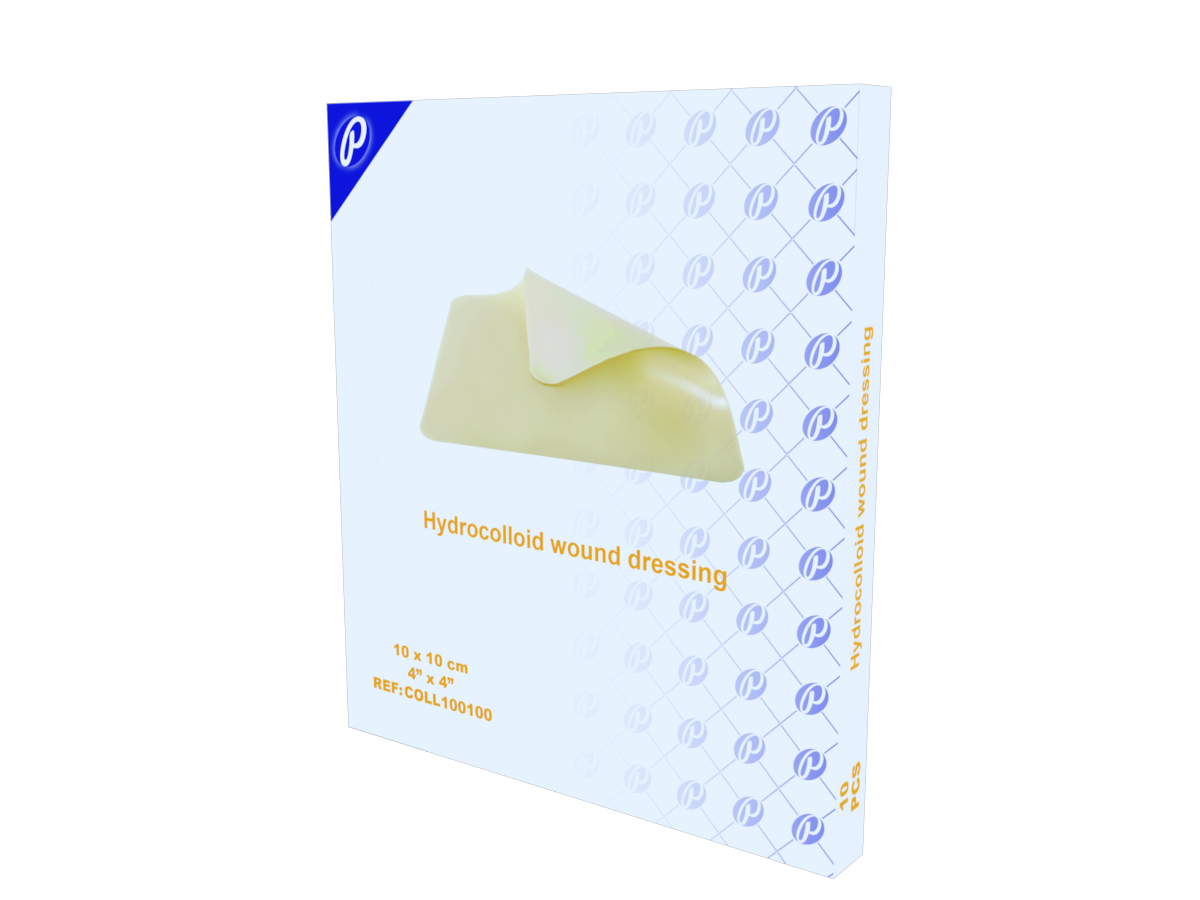
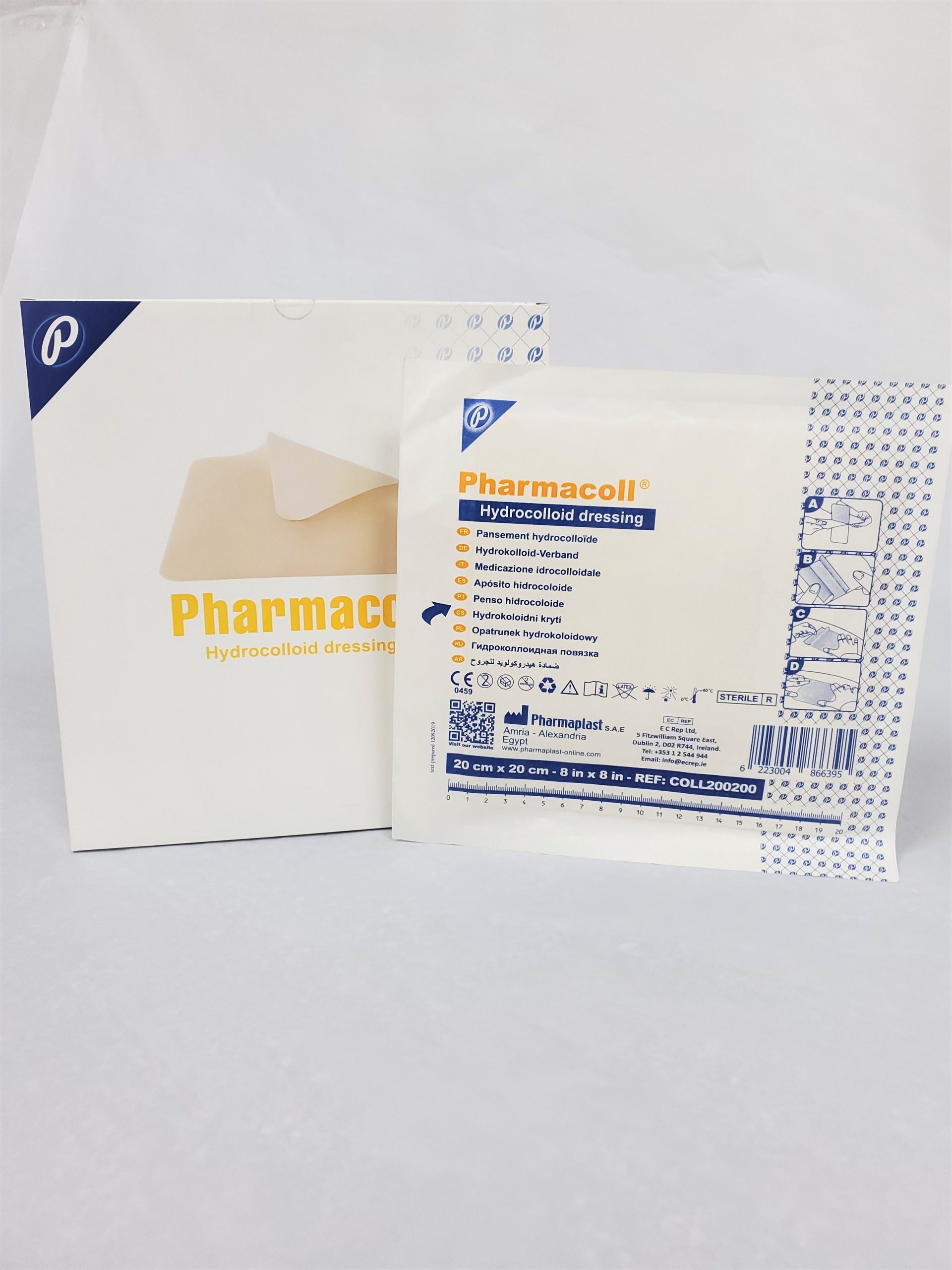
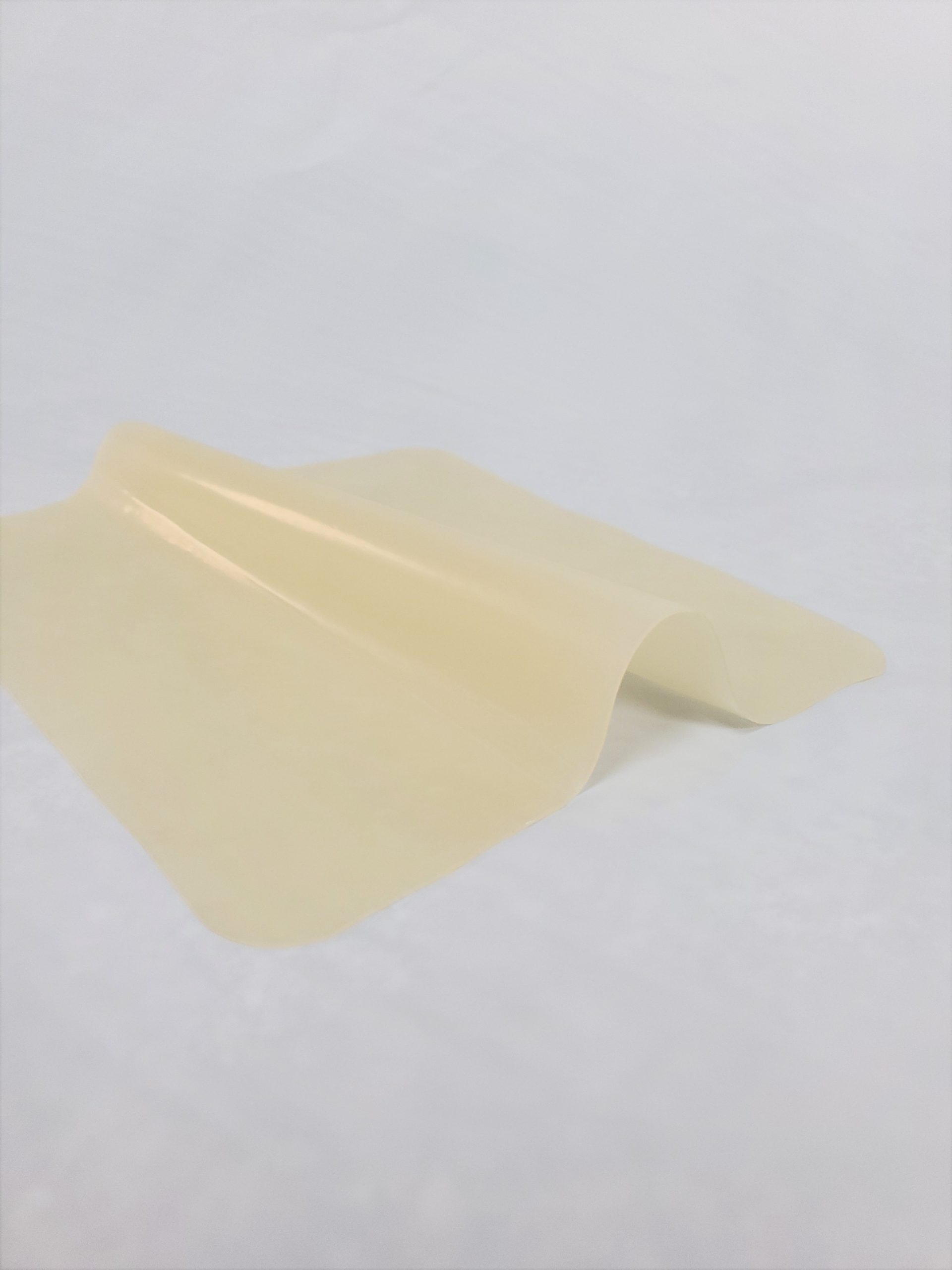
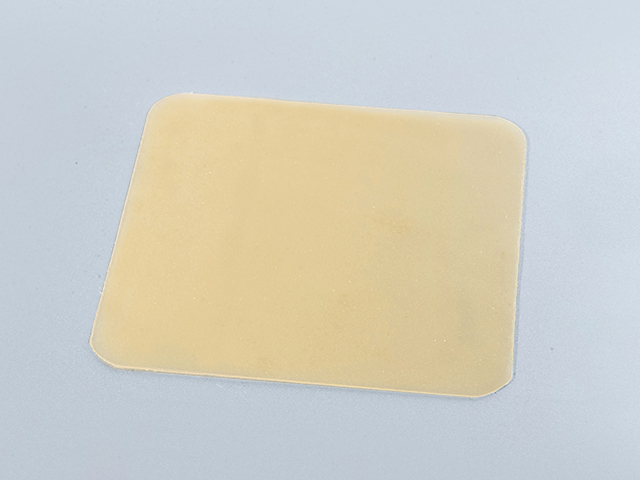
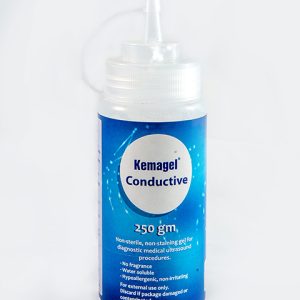
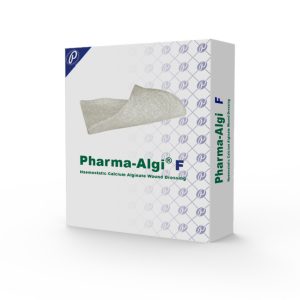
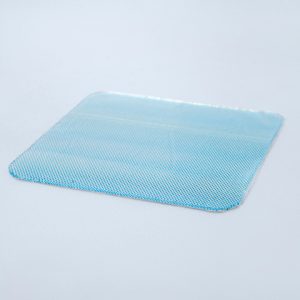
Valoraciones
No hay valoraciones aún.